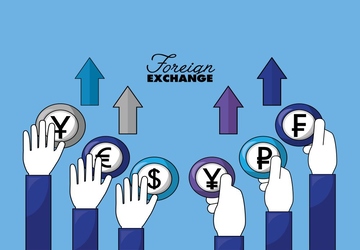Best ETFs for Diversification in Your Stock Portfolio
If you're seeking a well-rounded approach to investing in the stock market, Exchange-Traded Funds (ETFs) can be an excellent choice. ETFs are a collection of securities traded on exchanges, providing investors with a diverse portfolio in a single investment. Diversification within ETFs refers to spreading your money across various assets, reducing risk, and increasing potential returns.
This article will delve into ETFs and explore the best ones for diversification. This guide aims to help you make informed decisions and align your investment strategy by exploring their benefits and how they can strengthen your stock portfolio.

Top ETFs to Improve Diversification in Your Stock Portfolio Now!
Diversification is vital for any successful stock portfolio, as it helps spread risk and enhances potential returns. One effective way to achieve diversification is by incorporating Exchange-Traded Funds (ETFs) into your investment mix. ETFs offer a convenient and cost-effective means to gain exposure to various assets and markets.
This guide presents the top ETFs that can significantly improve diversification in your stock portfolio. These carefully selected ETFs cover various asset classes, including domestic and international stocks, bonds, and emerging markets. With these options at your disposal, achieving a well-diversified and resilient portfolio has never been easier!
1. Vanguard 500 Index Fund ETF (VOO)
It has a low expense ratio of 0.03%; moreover, it minimizes costs and maximizes returns, surpassing the average for US equity ETFs. Offering broad exposure to the S&P 500 Index, VOO captures around 80% of the US stock market, spanning diverse sectors. Its strong long-term performance, with an annualized return of 15.75% over a decade, highlights its reliability. Moreover, its tax efficiency, stemming from its ETF structure, enhances benefits for investors. Despite some drawbacks like limited international exposure and market-cap weighting, VOO's advantages make it a favored choice for diversification.
2. The Vanguard FTSE Developed Markets ETF (VEA)
With a meager expense ratio of 0.05%, VEA minimizes costs, leaving more room for returns. Providing broad exposure to the FTSE Developed All Cap ex US Index, it includes around 4,000 stocks from 24 developed countries, offering exposure to diverse economies and markets. VEA's long-term solid performance, with an annualized return of 9.07% over a decade, surpasses the category average. Additionally, its ETF structure grants tax advantages, enhancing benefits for investors. While there are considerations like currency and political risks, VEA's benefits make it a top choice for portfolio diversification.
3. The Vanguard FTSE Emerging Markets ETF (VWO)
It is an exceptional choice with a reduced expense ratio of 0.10%; VWO offers cost-effectiveness and preserves more returns for investors. Providing broad exposure to the FTSE Emerging Markets All Cap China A Inclusion Index, it includes around 5,000 stocks from 26 emerging markets, presenting opportunities in dynamic and fast-growing economies. VWO's remarkable performance, with an annualized return of 8.57% over a decade, surpasses the category average. The ETF structure ensures tax efficiency, benefitting investors. While currency and political risks should be considered, VWO's advantages make it a top pick for portfolio diversification and potential growth.
4. The iShares MSCI China ETF (MCHI)
This ETF offers cost-effectiveness, allowing investors to retain more returns. Providing broad exposure to the MSCI China Index with around 700 Chinese stocks in a low % expense ratio of 0.6%, MCHI offers access to the fast-growing and innovative sectors of the second-largest global economy. Over the past decade, MCHI has demonstrated strong performance, boasting an annualized return of 13.5%, outperforming the category average. While currency and political risks exist, MCHI's advantages make it a compelling pick for diversification and potential growth in your portfolio.
5. The iShares MSCI Frontier 100 ETF (FM)
It presents a compelling option with an expense ratio of 0.8%; FM offers cost-efficiency, allowing investors to retain more returns. Investing in the MSCI Frontier Markets 100 Index, FM provides broad exposure to around 100 stocks from 30 frontier markets, offering access to potentially high-return markets with unique growth drivers and opportunities.
Over the past decade, FM has delivered strong returns, with an annualized return of 9.88%, outperforming the category average. Despite currency and political risks, FM's benefits make it an attractive choice for diversification and potential growth in your investment portfolio.
6. iShares International Select Dividend ETF (IDV)
It invests in the Dow Jones EPAC Select Dividend Index, providing exposure to high-dividend-paying stocks from 21 developed countries outside the US with a low expense ratio of 0.5%. IDV's track record of strong performance, with an annualized return of 9.2% over the past 10.2 years, outperforming the category average, makes it an attractive option. While mindful of currency and political risks, IDV offers broad diversification and access to stable dividend growth, making it suitable for long-term portfolio growth.

7. The SPDR S&P Emerging Markets Small Cap ETF (EWX)
Investing in the S&P Emerging Markets Under USD2 Billion Index provides broad exposure to around 999 stocks from 24 emerging markets. These dynamic yet potentially risky companies offer higher growth potential and lower correlation with developed markets with a low expense ratio of 0.78%. EWX's strong performance, boasting an annualized return of 10% over the past 10 years, outperforming the category average, makes it an attractive option.
8. Invesco S&P 500 Equal Weight Consumer Discretionary ETF (RCD)
By investing in the S&P 500 Equal Weight Consumer Discretionary Index, RCD provides broad exposure to around 59 consumer discretionary stocks with equal weighting. This grants access to innovative and resilient US companies benefiting from consumer spending. RCD demonstrates strong performance and lower volatility with a remarkable annualized return of 17% over the past decade, outperforming the category average. While considering sector and equal-weighting risks, RCD offers diversification and potential growth in the consumer discretionary space.
9. iShares Core Growth Allocation ETF (AOR)
As a fund of funds, it invests in various iShares ETFs covering US and international stocks and bonds, offering a well-rounded exposure to different asset classes. AOR's target allocation of 59.9% stocks and 39.9% bonds, with a tilt towards growth stocks, provides a diversified mix with solid performance. With an annualized return of 11% over the past decade, outperforming the category average, AOR shows stability and lower volatility. Despite fund-of-funds and allocation risks, AOR offers adequate diversification in your portfolio.
Wrapping Up!
Diversification is an excellent hack for building a strong and balanced stock portfolio. The best ETFs for diversification offer a range of benefits, including low costs, broad exposure to a plethora of asset classes and markets, strong historical performance, and tax efficiency. These ETFs can play a key role in achieving a well-diversified and balanced stock portfolio by carefully considering risk tolerance and investment goals.


